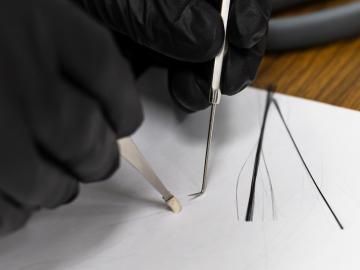
Filter News
Area of Research
News Type
News Topics
- (-) Advanced Reactors (13)
- (-) Buildings (35)
- (-) Composites (12)
- (-) Cybersecurity (14)
- (-) Emergency (3)
- (-) Exascale Computing (51)
- (-) Isotopes (35)
- (-) Mercury (7)
- (-) Nuclear Energy (71)
- (-) Space Exploration (13)
- 3-D Printing/Advanced Manufacturing (60)
- Artificial Intelligence (79)
- Big Data (50)
- Bioenergy (70)
- Biology (82)
- Biomedical (44)
- Biotechnology (26)
- Chemical Sciences (37)
- Clean Water (17)
- Computer Science (117)
- Coronavirus (20)
- Critical Materials (6)
- Education (2)
- Energy Storage (37)
- Environment (124)
- Fossil Energy (6)
- Frontier (45)
- Fusion (40)
- Grid (34)
- High-Performance Computing (82)
- Hydropower (6)
- ITER (4)
- Machine Learning (40)
- Materials (53)
- Materials Science (64)
- Mathematics (9)
- Microelectronics (3)
- Microscopy (27)
- Molten Salt (2)
- Nanotechnology (21)
- National Security (63)
- Neutron Science (85)
- Partnerships (36)
- Physics (39)
- Polymers (12)
- Quantum Computing (35)
- Quantum Science (49)
- Security (18)
- Simulation (44)
- Software (1)
- Statistics (2)
- Summit (40)
- Transportation (35)
Media Contacts

Stronger than steel and lighter than aluminum, carbon fiber is a staple in aerospace and high-performance vehicles — and now, scientists at ORNL have found a way to make it even stronger.

Researchers at ORNL have developed a tool that gives builders a quick way to measure, correct and certify level foundations. FLAT, or the Flat and Level Analysis Tool, examines a 360-degree laser scan of a construction site using ORNL-developed segmentation algorithms and machine learning to locate uneven areas on a concrete slab.

Scientists at ORNL have developed a vacuum-assisted extrusion method that reduces internal porosity by up to 75% in large-scale 3D-printed polymer parts. This new technique addresses the critical issue of porosity in large-scale prints but also paves the way for stronger composites.

ORNL researchers helped introduce college students to quantum computing for the first time during the 2025 Winter Classic Invitational, providing hands-on access to real quantum hardware and training future high-performance computing users through a unique challenge that bridged classical and quantum technologies.

The Innovative and Novel Computational Impact on Theory and Experiment, or INCITE, program has announced the 2026 Call for Proposals, inviting researchers to apply for access to some of the world’s most powerful high-performance computing systems.
Daniel Jacobson, distinguished research scientist in the Biosciences Division at ORNL, has been elected a Fellow of the American Institute for Medical and Biological Engineering, or AIMBE, for his achievements in computational biology.

A team from ORNL, joined by university students, recently traveled to the Ohio State University Research Reactor to conduct a novel experiment on nuclear thermal rocket fuel coatings — one that could help propel NASA’s astronauts to Mars faster and more efficiently.

Researchers from ORNL have developed a new application to increase efficiency in memory systems for high performance computing. Rather than allow data to bog down traditional memory systems in supercomputers and impact performance, the team from ORNL, along with researchers from the University of Tennessee, Knoxville, created a framework to manage data more efficiently with memory systems that employ more complex structures.

Jairus Hines, an electronics and unmanned systems technician at ORNL, works with airborne, waterborne and ground-based drones. As part of the lab’s Autonomous Systems group, he applies "low and slow" drone technology to radiation detection for national security missions.
During a recent visit to ORNL, several OASA (IE&E) representatives explored the ORNL’s leadership in advanced nuclear energy development to inform the design and construction of a microreactor to power mission-critical facilities at two Army bases.


